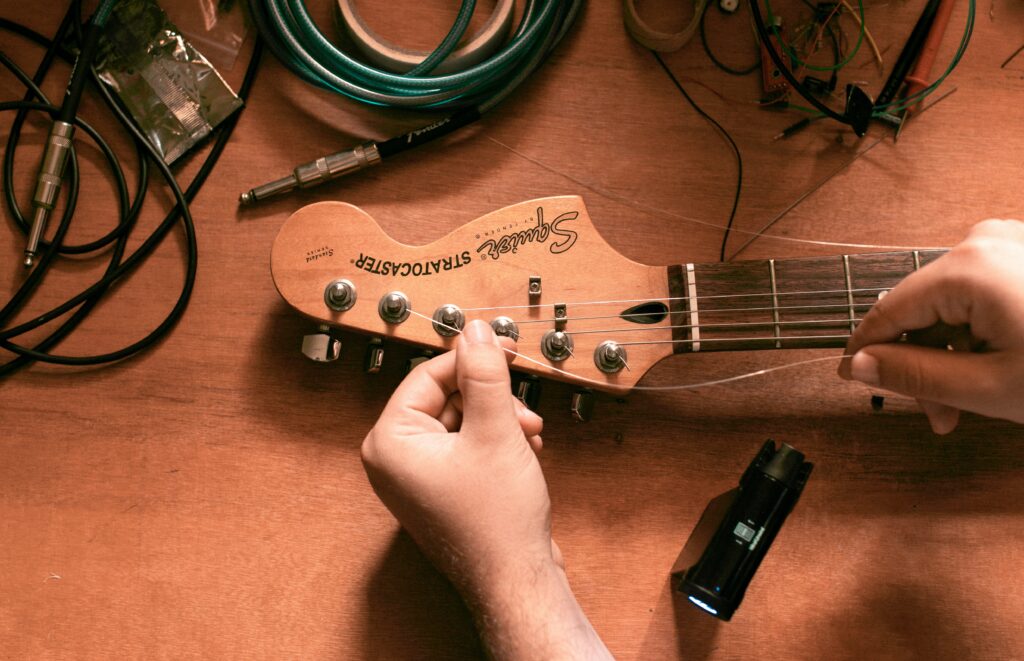Welcome back, readers! In this blog, we shall discuss how you can improve your electric guitar tone on a budget and take your sound to the next level.
These tips apply to all electric guitars, so let’s kick things off.

#1 Change your string gauge
String gauge can really impact how you approach your playing style and ultimately, contribute to your guitar tone. If you are currently using medium gauge strings and quickly tire out with aching fingers, try some light or super light gauge strings.
Conversely, if you are looking to get tighter tones and more tuning stability then try medium to heavy gauge strings. Another great option is to install hybrid strings that give you light gauges on the treble side while medium or heavy on the bass side.
#2 Check your intonation and action
Ever experienced all strings being in tune while playing them open while some notes sound out of tune? There’s a high chance that your guitar is having intonation issues or the action is too high.
Solve this problem by first adjusting the neck relief of your guitar. Quarter-turn your truss rod clockwise at a time and let the neck relief adjust itself. It shouldn’t take more than 2 to 3 quarter turns to level your neck relief.
Next, pitch your guitar up to tune using a reliable tuner in standard tuning. Play natural harmonics on your 12th fret on each string and observe the tuner to identify which string is out of pitch.
Once identified, move your bridge saddle of that specific string using a screwdriver or hex key, as applicable in the following direction:
If the string’s intonation is sharp, move the guitar saddle away from the fretboard. This increases the string length and lowers the pitch.
Similarly, If the string’s intonation is flat, move the guitar saddle towards the fretboard. This decreases the string length and raises the pitch.
#3 Use the guitar’s volume and tone knobs correctly
It’s common for humbuckers to produce extra low-end, especially on the neck pickup. To reduce it, try lowering your volume knob. You will be surprised how greatly it will impact your tone.
Similarly for single coils, use the tone knob while using the bridge pickups to clear out the extra high-end and produce a mellower sound.

#4 Learn to dial your amp correctly
Dialing all knobs to 10 does not help at all in achieving a great tone. Use the right amount of gain as per your genre and always use the EQ knobs to cut or mix the bass, mids, and treble.
Surprise yourself with a new tone with each adjustment, and you will realize that you didn’t need that new pedal after all.
#5 Upgrade your guitar cables
Cables are the most important element between your guitar and amp that transfers the signal from your guitar to the amp.
If you are using an inexpensive guitar cable, chances are that there might be some issues with your signal and a high probability of having a noisy guitar.
Try upgrading your cable to the best quality that fits your budget, and avoid going overboard and investing too much in a cable. A mid-range priced cable shall be more than sufficient to get the job done.

Conclusion
Achieving a great guitar tone is every guitarist’s dream, and it should never burn a hole in your pocket. So before you invest in a new guitar, new pickups, or new amp, try these tips and observe how they impact your playing. Good luck!




